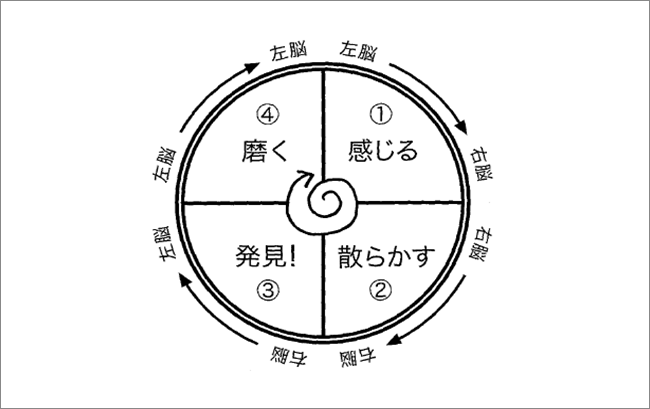Summer nights. While chasing the moon and feeling the night breeze is lovely, having "gyoza and beer" makes indoors perfect too.
Yes, gyoza and beer. That crispy skin you bite into, the meat juices bursting out and nearly scalding your mouth, then hurriedly washing it down with beer—repeat. Whether from a restaurant, homemade, or frozen. Thin skin or chewy dough. You start with one or two, and before you know it, you've polished off three or four plates. It's crazy, right? Once you're there, rain or shine, it doesn't matter anymore.
I bow in admiration to the formula "gyoza + beer," which unfailingly brings happiness anytime, anywhere, with anyone.

Now then.
When starting consulting on innovative business and product development, I'm often asked, "First, please show us the work plan and schedule."
I completely understand that sentiment, but it's actually quite difficult. The reason is simple: ideas don't come from following a clear step-by-step process like "Do this, then do that."

Some might get angry and say, "What are you talking about now?! Haven't you been explaining that ideas come in four steps?!" But please hold on a moment.
It's true that the basic flow is: gather materials in "Feeling Mode," explore unprecedented combinations in "Scattering Mode," verbalize them in "Discovery Mode," and shape concrete plans in "Polishing Mode."
However, in reality, you often have to move back and forth between these four "modes." For example, if "Discovery!" isn't working, you might return to "Feeling," or you might try moving ahead to "Polish." It's not about "steps" at all; you must master four distinct "ways of using your mind" (switching modes).
Early design thinking didn't prescribe any specific steps to follow; in fact, it felt like "There's no process at all!" Instead, it emphasized
① "Ideation": Gathering insights from all sources
② Generate: Translate those insights into ideas
③ "Implementation": Creating concrete, detailed action plans from those ideas
It emphasized the importance of moving between these three overlapping spaces.
However, perhaps because such an ambiguous approach made it difficult to secure large-scale consulting projects, it gradually evolved into
"① Identifying challenges or needs → ② Defining the problem to solve → ③ Generating ideas → ④ Prototyping → ⑤ Implementation → ⑥ Evaluation"
and a "work plan" emerged suggesting that dedicating XX hours to each step would guarantee project success.
This is surely a dangerous sign. The more it becomes a "convenient tool" that leaves its essence behind, the more widespread the disappointment becomes.

Product Portfolio Management
If the term "framework" implies a "mental model" or "formula" that automatically produces answers when you input data, like the famous "Product Portfolio Management," then ideas certainly don't emerge from frameworks.
Because in the real world of idea generation, whenever you hit a wall, you must constantly "go back and forth" between three spaces—or, as design thinking would say, four "modes": "inspiration," "ideation," and "realization." Linear progress management, like solving a mathematical equation, is nearly impossible.
"Do you understand?"
"Huh!? I get it, but to secure the project budget, I still need a 'work plan and schedule'."
Well... hmm, this is tough.
Here you go!









